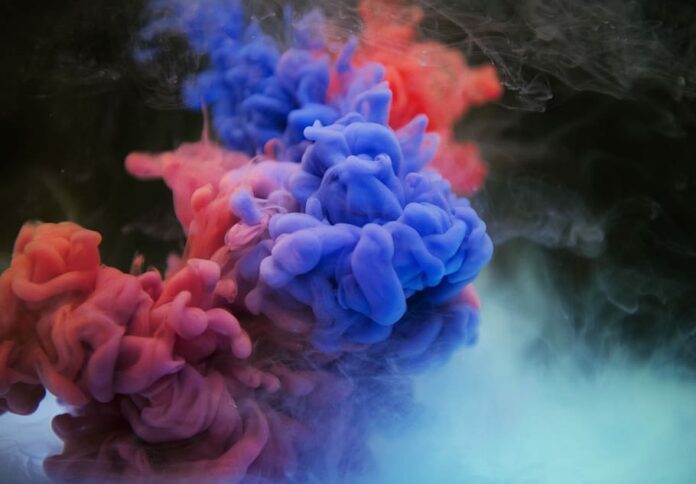The following code in python uses OpenCV library which is employed for image processing techniques. The program allows the detection of a specific color in a live stream video content. A video is composed of infinite frames at different time instants. We will detect the colour of every frame one by one.
The code will only compile in linux environment.
Make sure that openCV is installed in your system before you run the program.
For installation:
- Run the command following on your terminal to install it from the Ubuntu or Debian repository.
sudo apt-get install libopencv-dev python-opencv
- OR In order to download OpenCV from the official site run the following command:
bash install-opencv.sh
on your terminal. Type your sudo password and you will have installed OpenCV. This operation may take a long time due to the packages to be installed and the compilation process.
- To install numpy just use the command:
sudo pip install numpy
Python3
# Python program for Detection of a # specific color(blue here) using OpenCV with Pythonimport cv2import numpy as np # Webcamera no 0 is used to capture the framescap = cv2.VideoCapture(0) # This drives the program into an infinite loop.while(1): # Captures the live stream frame-by-frame _, frame = cap.read() # Converts images from BGR to HSV hsv = cv2.cvtColor(frame, cv2.COLOR_BGR2HSV) lower_blue = np.array([110,50,50]) upper_blue = np.array([130,255,255]) # Here we are defining range of bluecolor in HSV # This creates a mask of blue coloured # objects found in the frame. mask = cv2.inRange(hsv, lower_blue, upper_blue) # The bitwise and of the frame and mask is done so # that only the blue coloured objects are highlighted # and stored in res res = cv2.bitwise_and(frame,frame, mask= mask) cv2.imshow('frame',frame) cv2.imshow('mask',mask) cv2.imshow('res',res) # This displays the frame, mask # and res which we created in 3 separate windows. k = cv2.waitKey(5) & 0xFF if k == 27: break # Destroys all of the HighGUI windows.cv2.destroyAllWindows() # release the captured framecap.release() |
Explanation of Code:
- Camera Settings: In order to perform runtime operations, the device’s web-camera is used. To capture a video, we need to create a VideoCapture object. Its argument can be either the device index or the name of a video file. The device index is just the number to specify which camera. Normally one camera will be connected, so we simply pass 0. You can select the second camera by passing 1 and so on. After that, you can capture frame-by-frame. But in the end, don’t forget to release the capture. Moreover, if anyone wants to apply this color detection technique on any image it can be done with little modifications in the code which I’ll discuss later.
- Capturing frames: The infinite loop is used so that the web camera captures the frames in every instance and is open during the entire course of the program.
After capturing the live stream frame by frame we are converting each frame in BGR color space(the default one) to HSV color space. There are more than 150 color-space conversion methods available in OpenCV. But we will look into only two which are most widely used ones, BGR to Gray and BGR to HSV. For color conversion, we use the function cv2.cvtColor(input_image, flag) where flag determines the type of conversion. For BGR to HSV, we use the flag cv2.COLOR_BGR2HSV. Now we know how to convert BGR images to HSV, we can use this to extract a colored object. In HSV, it is more easier to represent a color than RGB color-space.
In specifying the range, we have specified the range of blue color. Whereas you can enter the range of any colour you wish. - Masking technique: The mask is basically creating some specific region of the image following certain rules. Here we are creating a mask that comprises of an object in blue color. After that, I have used a bitwise_and on the input image and the threshold image so that only the blue coloured objects are highlighted and stored in res.
We then display the frame, res, and mask on 3 separate windows using imshow function. - Display the frame: As imshow() is a function of HighGui it is required to call waitKey regularly, in order to process its event loop.
The function waitKey() waits for key event for a “delay” (here, 5 milliseconds). If you don’t call waitKey, HighGui cannot process windows events like redraw, resizing, input event, etc. So just call it, even with a 1ms delay . - Summarizing the process:
- Take each frame of the video.
- Convert each frame from BGR to HSV color-space.
- Threshold the HSV image for a range of blue color.
This article is contributed by Pratima Upadhyay. If you like Lazyroar and would like to contribute, you can also write an article using write.geeksforgeeks.org or mail your article to review-team@geeksforgeeks.org. See your article appearing on the Lazyroar main page and help other Geeks.
Please write comments if you find anything incorrect, or you want to share more information about the topic discussed above.

